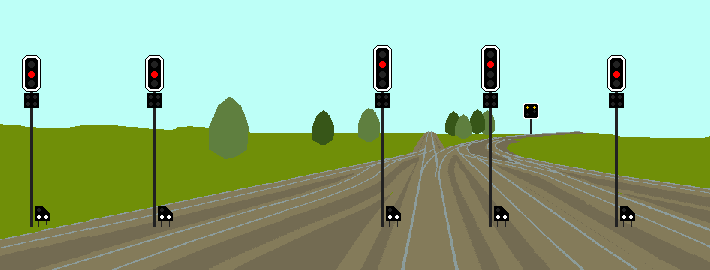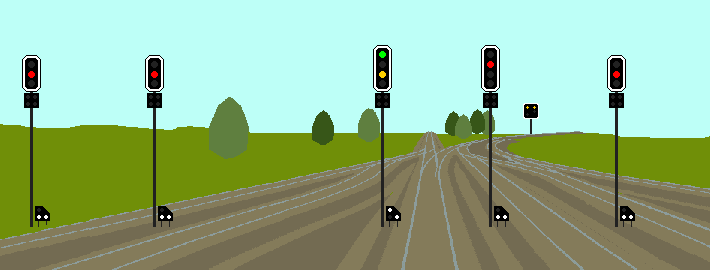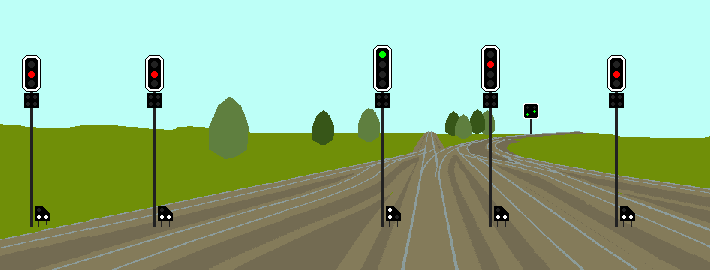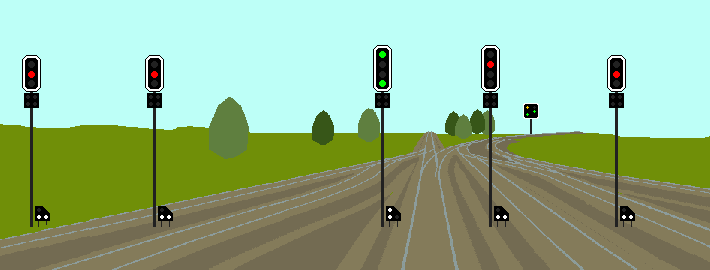|
|
|
Important Note: This web site has not been updated since 2003 and is therefore not up-to-date. See here.
Hochsignalisierung (sorry, I couldn't find an English word for it) means, that a main signal may change from a restrictive aspect directly to a better one. Nothing unusual you might think if you are familiar with e.g. British signalling. But the approach in the German speaking countries differs: in Switzerland it is allowed, whereas in Austria it is not. In Germany it depends on the signalling system: Hochsignalisierung is possible in the Ks and Hl system but not in H/V system.

These are the exit signals at the north side of Eglisau. The straight line leads to Koblenz, the line to the right leads to Schaffhausen. The next station in the direction of Schaffhausen - which is Hüntwangen-Wil - is located very near to Eglisau. For this reason the entry distant signal (one can see it in the background) is located at reduced distance to the entry signal.

The exit signal shows ''proceed aspect 2''. Speed restriction is not applied because the turnout is set to a diverging route (it's a »high speed« turnout) but because the entry signal of Hüntwangen-Wil is still at danger. Observe the aspect of the dwarf signal: normally it would show ''proceed'', but because of the short distance to the closed entry signal of Hüntwangen it shows ''proceed with caution''.

After the entry signal of Hüntwangen-Wil changes to a proceed aspect, the exit signal changes directly from ''proceed aspect 2'' to ''proceed aspect 1''. This is what is meant with Hochsignalisierung.
Observe also the aspect of the dwarf signal!

If the entry signal of Hüntwangen-Wil shows only ''proceed aspect 3'' the exit signal will also change only from ''proceed aspect 2'' to ''proceed aspect 3''.
(Last Update: 09.03.2003)
![]() This website is published under a creative commons license.
Furthermore, use of the contents in the wikipedia is explicitely allowed.
This website is published under a creative commons license.
Furthermore, use of the contents in the wikipedia is explicitely allowed.
Errors and Omissions excepted!